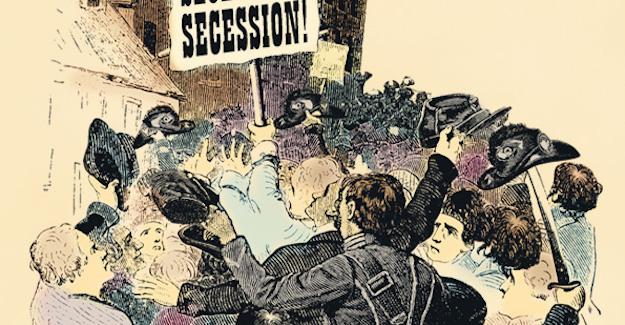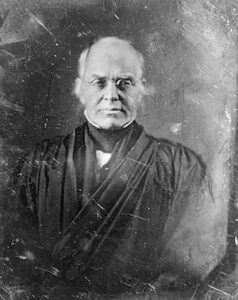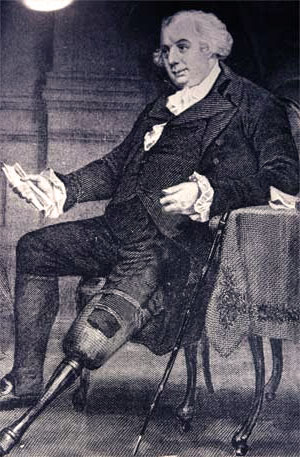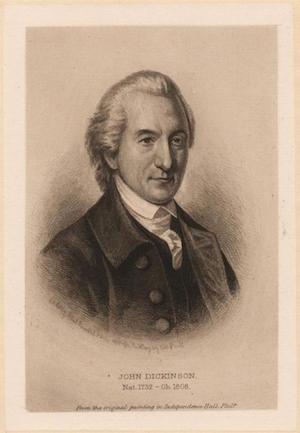Editor’s NOTE: Consider that what you are about to read is a superb historical lesson on the subject of the title, but that it was written nearly eight and a half years ago. Look how far we have come with the arrogance of Governors and mayors all across America. What lies ahead for We the People and our children and grandchildren. What lies ahead for the future and the survival of the united States? … and yet ~ what if…. ~ Ed.

With all fifty states offering petitions to the central government to leave the Union, the legality of secession is now front page news in the United States. Can a state legally secede from the Union? Many, including Supreme Court justice Antonin Scalia, suggest no. In a 2006 letter, available here, Scalia argued that a the question was not in the realm of legal possibility because 1) the United States would not be party to a lawsuit on the issue 2) the “constitutional” basis of secession had been “resolved by the Civil War,” and 3) there is no right to secede, as the Pledge of Allegiance clearly illustrates through the line “one nation, indivisible.”
Scalia is not the first Supreme Court justice to establish this position. In the case of Texas v. White in 1869, Supreme Court Chief Justice Salmon P. Chase wrote that, “The union between Texas and the other states was as complete, as perpetual, and as indissoluble as the union between the original states. There was no place for reconsideration or revocation, except through revolution or through consent of the States.” The majority opinion struck down the Texas Ordinance of Secession, calling it “null,” and crafted a decision that rendered all acts of secession illegal according to the “perpetual union” of both the Articles of Confederation and subsequent Constitution for the United States. Chase did leave an opening, “revolution or the consent of the States,” but without either, secession could never be considered a legal act.

Daguerreotype of Joseph Story ~ 1844
The arguments against legal secession are generally based on both a historical concept of the Union and the language of the Constitution itself. In the Texas v. White decision, Chase began his legal challenge to secession with a historical discussion of the Union. He suggested that the Union predated the states and grew from a common kindred spirit during the years leading to the American War for Independence. This “one people” mentality was best articulated by Supreme Court Justice Joseph Story in his famous Commentaries on the Constitution of the United States.
Story, who channeled John Marshall and Alexander Hamilton, reasoned that the Constitution was framed and ratified by the people at large, not the people of an individual state and thus held the same legal position of a state itself formed from many counties. “The constitution of a confederated republic, that is, of a national republic, formed of several states, is, or at least may be, not less an irrevocable form of government, than the constitution of a state formed and ratified by the aggregate of the several counties of the state.” In one sentence, Story reduced the states to the status of a county, shire, or province, and this general argument was used as a hammer both during Reconstruction and after against the sovereignty of the states.
Story additionally concluded, as did Chase in 1869, that the term “perpetual” found in the Articles of Confederation, deemed the Union indissoluble. Chase surmised that the Constitution simply made the Union “more perfect” while Story suggested that the Constitution superseded the Articles of Confederation but did not change the permanent and “perpetual” nature of the Union. Story defended his position with the “Supremacy Clause” found in Article VI, which states that all laws or treaties made “in pursuance of the Constitution” were the “supreme law of the land,” and he pointed to the letter sent by the Philadelphia Convention accompanying the Constitution to the state ratifying conventions that the Constitution aimed at a “consolidation of the Union.” Hence, to Story and Chase, the Union continued to exist in an altered—i.e. consolidated—form and could not be dissolved.
Another argument against secession centers on the language of Article I, Section 10, which declares that “No state shall enter into any treaty, alliance, or confederation….” To proponents of this position, Article I, Section 10 unequivocally shows that the states which formed the Confederate States of America were in clear violation of the Constitution, thus invalidating their government and the individual acts of secession which led to it. Abraham Lincoln indirectly defended this position by declaring the seceding states were in “rebellion” and therefore still members of the Union. The Constitution, then, was still legally enforceable in those states, including Article I, Section 10.
Finally, some will concede that the original thirteen states may have an argument for secession due to the Declaration of Independence and Thomas Jefferson’s language establishing thirteen “free and independent states.” But the other thirty-seven, formed at least in part through the common territory of the United States, have no claim to secession. They were not states until Congress granted them statehood and consequently never constituted a sovereign legal entity, Texas and Hawaii to the contrary (though even Chase suggested that Texas lost its sovereignty when it joined the Union in 1845).
These arguments seem like a fairly strong case against secession. Three Supreme Court justices, one famous president, a bloody war, and the language of a modern pledge of allegiance offer conclusive proof that secession, while an entertaining philosophical exercise, has no legal basis. Their various opinions and conclusions, however, all have gaping holes.
Scalia’s positions are the most vapid. Secession, as accomplished by the Southern states in 1860 and 1861 and as discussed by the North at the Hartford Convention in 1815, is an independent act by the people of the states, and accomplished in the same fashion as the several conventions that occurred throughout early American history. The United States would never be a party to a lawsuit on the issue because secession, both de facto and de jure, is an extra-legal act of self-determination, and once the States have seceded from the Union, the Constitution is no longer in force in regard to the seceded political body. This same rule applies to the Article I, Section 10 argument against secession. If the Constitution is no longer in force—the States have separated and resumed their independent status—then the Supreme Court would not have jurisdiction and therefore could not determine the “legality” of the move.
The Union, then, through a declaration of war could attempt to force the seceded States to remain, but even if victorious that would not solve a philosophical issue. War and violence do not and cannot crush the natural right of self-determination. It can muddle the picture and force the vanquished into submission so long as the boot is firmly planted on their collective throats, but a bloody nose and a prostrate people settles nothing. Oliver Ellsworth of Connecticut said in 1788 that he feared a “coercion of arms” in relation to a delinquent state. “This Constitution does not attempt to coerce sovereign bodies, states, in their political capacity. No coercion is applicable to such bodies, but that of an armed force. If we should attempt to execute the laws of the Union by sending an armed force against a delinquent state, it would involve the good and the bad, the innocent and the guilty, in the same calamity.” Ellsworth recognized, as did the majority of the founding generation, that force did not destroy sovereignty. It created artificial supremacy, but sovereignty, the basic tenant of the founding, could not be surrendered in such a manner. Sovereignty, in fact, cannot be surrendered at all; it can be delegated, as in the powers granted to the general government in Article I, but never surrendered.
His “Pledge of Allegiance” analogy is the most absurd argument of the bunch. The modern pledge was written by Francis Bellamy, a socialist minister who wanted to indoctrinate American schoolchildren with a nationalist message, one based on the “great speeches” of Daniel Webster and Abraham Lincoln in relation to the “One Nation which the Civil War was fought to prove.” Sprinkle in some “liberty and justice” from the French Revolution and you have a message that any good leftist nationalist can embrace. The founding generation would not have said such a pledge, if for no other reason that most did not view the United States as a “nation” in the strict sense of the word, a single people.
The other issues involved in the debate are slightly more complicated, but in several instances come back to Scalia’s more simplistic analysis. In the Texas v. White decision, Chase implicitly reasoned that the Union was an “indissoluble” contract between the “American people” and the federal government, or in this case the people of Texas and the federal government. All contracts are intended to be perpetual. But if this were the case, how could nine States ratify a new Constitution while four States remained part of another Union in clear violation of the language of the Articles of Confederation. Changes to the Articles required the consent of all thirteen States, not nine, and thus the Constitution can be viewed, in part, as an act of secession.

James Madison
Moreover, James Madison argued that the Union was a different type of contract. “We are not to consider the Federal Union as analogous to the social compact of individuals: for if it were so, a majority would have a right to bind the rest, and even to form a new constitution for the whole… .” The Constitution was framed by the unanimous consent of the States present in convention assembled in Philadelphia, but it had no teeth until the States, in convention, ratified it. Even at that point, Madison suggested, the States could not bind the rest into accepting the document or remaining in the Union. The Constitution does not have a coercive principle, as Ellsworth called it. An “indissoluble” Union would suggest that it does.
Waging war “against them (the States)” is an act of treason, and as per the Constitution, a State can only be “protected” by the central government on the application of the legislature or the executive in the case of invasion. Lincoln violated both constitutional safeguards against coercion by the central government in 1861, of course only if the states remained in the Union, as he insisted they did. If not, war required a declaration from Congress, something Lincoln did not have, and by declaring war, Congress would have recognized the Confederate States as a legitimate government. Either way, Lincoln violated the Constitution, thus rendering the “bloody nose” argument against secession void.
The “one people” argument was dissected by John Taylor of Caroline and Abel P. Upshur in their respective commentaries on the document. In his New Views of the Constitution of the United States, Taylor contended that the continuity between the Articles of Confederation and the Constitution reinforced the sovereignty of the states, and declared that, “There are many states in America, but no state of America, nor any people of an American state. A constitution for America or Americans, would therefore have been similar to a constitution for Utopia or Utopians.” This view is in sharp contrast to Chase, who argued that continuity maintained a “perpetual” Union. Taylor wrote, “This construction bestows the same meaning upon the same words in our three constituent or elemental instruments, and exhibits the reason why the whole language of the constitution is affianced to the idea of a league between sovereign states, and hostile to that of a consolidated nation.”
Upshur was more direct in his defense of both nullification and secession as a right of the sovereign States. Published as a direct attack on Story’s polemic, Upshur’s A Brief Enquiry into the True Nature and Character of Our Federal Government is perhaps the last great commentary of the antebellum period. Upshur decried the “imaginative construction” of people like Story and Webster and insisted that consolidation was never the aim of the Constitution. In defending the right so the States to control the government and “interpose” their sovereignty to curtail central authority, Upshur said:
The checking and controlling influences which afford safety to public liberty, are not to be found in the government itself. The people cannot always protect themselves against their rulers; if they could, no free government, in past times, would have been overthrown. Power and patronage cannot easily be so limited and defined, as to rob them of their corrupting influences over the public mind. It is truly and wisely remarked by the Federalist, that “a power over a man’s subsistence is a power over his will.” As little as possible of this power should be entrusted to the federal government, and even that little should be watched by a power authorized and competent to arrest its abuses. That power can be found only in the states. In this consists the great superiority of the federative system over every other. In that system, the federal government is responsible, not directly to the people en masse, but to the people in their character of distinct political corporations. However easy it may be to steal power from the people, governments do not so readily yield it to one another. The confederated states confer on their common government only such power as they themselves cannot separately exercise, or such as can be better exercised by that government. They have, therefore, an equal interest, to give it power enough, and to prevent it from assuming too much. In their hands the power of interposition is attended with no danger; it may be safely lodged where there is no interest to abuse it.

Gouverneur Morris
During the Philadelphia Convention of 1787, Gouverneur Morris of Pennsylvania outlined “the distinction between a federal and a national supreme government; the former being a mere compact resting on the good faith of the parties, the latter having a complete and compulsive operation.” If the Constitution established a federal government, and it did, then the Constitution did not have a “compulsive operation.” In essence, the people of the states in convention could either interpose their sovereignty to arrest the acts of the general government or withdraw from the Union. Morris, a nationalist, recognized that the states still held sway when he suggested that the Constitution be voted on by state and that the states, not a consolidated people, had to ratify the document. The Constitution as ratified in 1787 and 1788 is “a mere compact resting on the good faith of the parties.” That compact can be unilaterally broken at any point by the same people of the States which ratified it.
Neither the Framers nor the ratifiers believed that the Constitution created a “consolidated nation” as Story suggested. It was argued in all state ratifying conventions that the opposite was true. The Union was made “more perfect” but never consolidated. The States still had all powers not delegated to the general government, as the Tenth Amendment to the Constitution clearly illustrates, and every State proposed a “Tenth Amendment” in their suggested bill of rights in the months after ratification. John C. Calhoun wrote that, “I maintain that sovereignty is in its nature indivisible. It is the supreme power in a state, and we might just as well speak of half a square, or half a triangle, as of half a sovereignty.” In other words, delegated powers were still retained by the people of the States at large for their exercise if they chose to rescind that delegation. Sovereignty can never be divided or surrendered in part. If the states had it in 1776 as Jefferson wrote, then they maintain that sovereignty to this day and thus can exercise that sovereignty through an act of interposition or withdraw.
As for those who suggest that a state carved from the common property of the United States does not have the same sovereignty as the original thirteen states, Jefferson made clear in his Northwest Ordinance of 1787 that new states would enter the Union on “equal footing” with the existing states, meaning that they had the same rights, privileges, and immunities as the original thirteen, including the right of interposition and withdrawal. Jefferson himself authored the Kentucky Resolutions of 1798, a clear indication that he believed as much. Kentucky was not one of the original states, but the people of Kentucky had the same right of recourse that the people of Virginia had in opposing the unconstitutional Sedition Act of 1798. If the argument against this position is correct, then the original thirteen states, themselves pared from the territory of Great Britain, would be illegal and illegitimate. That is not the case.
 Secession and interposition—nullification—are healthy discussions to have in a federal republic. There mere threat can, and has, spurred the central government to reform. The American people are not ready for secession. The states, the economy, and the people are too dependent on the central authority. If nothing else, Hamiltonianism has accomplished slavish loyalty to the system. Yet, perhaps following the lead of John Dickinson of Delaware would be appropriate at this critical juncture in American history. Americans as a whole recognize that the debt is excessive, America is virtually bankrupt, and the central authority is out of control. Secession is a manifestation of the fear that the situation will not improve. Perhaps that is the case, but Dickinson faced the same situation in the 1770s.
Secession and interposition—nullification—are healthy discussions to have in a federal republic. There mere threat can, and has, spurred the central government to reform. The American people are not ready for secession. The states, the economy, and the people are too dependent on the central authority. If nothing else, Hamiltonianism has accomplished slavish loyalty to the system. Yet, perhaps following the lead of John Dickinson of Delaware would be appropriate at this critical juncture in American history. Americans as a whole recognize that the debt is excessive, America is virtually bankrupt, and the central authority is out of control. Secession is a manifestation of the fear that the situation will not improve. Perhaps that is the case, but Dickinson faced the same situation in the 1770s.
Often called the “Penman of the Revolution” for his famous Letters from a Farmer in Pennsylvania, Dickinson understood that a final break with the crown may occur, but he urged his fellow colonists to be cautious and explored every avenue for a peaceful resolution to the difficulties facing the colonies through 1775 and argued against separation in 1776. His was a conservative constitutional defense of the “ancient constitutions” of Great Britain. He recognized that Great Britain had the authority to regulate trade, but insisted that local issues be directly handled by the colonies, including the right of taxation. During the Philadelphia Convention of 1787, he argued against nationalist innovations that would destroy the traditional relationship between local and central authority so long forged in America. Alterations could and should be made, but the federal union had to be maintained.
RELATED: The Rallying Cry of Secession
The energy being placed in the secession petition movement would be more productively utilized in calling for conventions to amend the Constitution. Perhaps limiting the president to one term, as the Hartford Convention proposed in 1815, requiring a two-thirds majority to borrow money, or creating a committee of states to act as a final check on the constitutionality of federal measures could be beneficial alterations to the Constitution. The founding generation would certainly agree that changes could and should be made through the amendment process. They did so twelve times, including the Bill of Rights. All constitutional methods should be exhausted before the American principle of self-determination is invoked, but if conventions are called, and they must be at this point, all options should be on the table. That would be the Dickinsonian solution to the problem. “Experience,” he said in 1787, “must be our only guide. Reason may mislead us.”
Written by Brion McClanahan for The American Conservative ~ December 7, 2012
